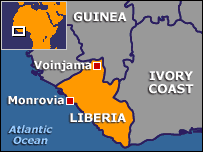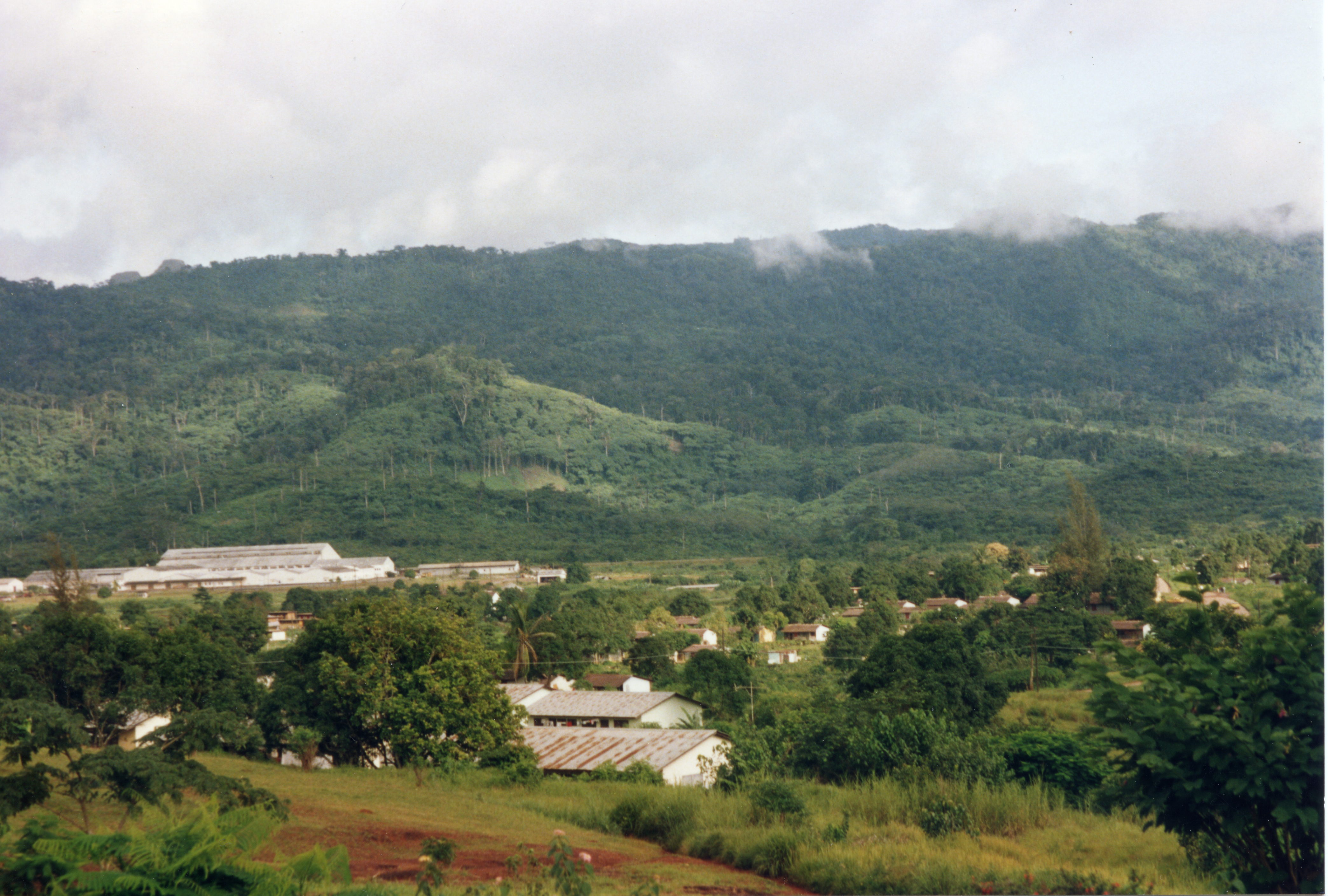Food situation in Liberia: Gbarnga and Monrovia

GBARNGA, 14 January 2010 (IRIN) – Every year Liberian farmers lose 60 percent of their harvest to birds and vermin or poor storage conditions, contributing to country-wide food insecurity, say UN officials, who are calling on donors to put more funding into pest management and storage.
The Ministry of Agriculture estimates 52,000 tons of rice out of 144,000 produced in 2007 was lost, while 44,027 tons of a 155,293 ton harvest was lost in 2008.
“Our interaction with farmers has shown they lack very basic knowledge of pest control,” said Augustus Flomo, a consultant with local NGO Agency for Economic Development and Empowerment (AEDE), which partners with the Food and Agriculture Organization (FAO) in Liberia.
Eight out of 10 rural Liberians are moderately or highly vulnerable to food insecurity, according to the latest government food security survey.
During the country’s 14 years of conflict, which ended in 2003, production plummeted, and Liberians went from importing 30 percent to 60 percent of their rice needs, said Ahmed Ag Aboubacrine, emergency FAO adviser.
Production has not recovered since, leading the Agriculture Ministry to try to reverse the trend by encouraging Liberians to return to their farms. But seeing over half of a harvest lost puts farmers off, said Daniel Lorbah, a farmer in Margbi County, 40km north of Monrovia.
Flash strips, rat traps
FAO is training farmers how to ward off rats and birds in field schools it has set up with AEDE and the Agriculture Ministry in all of Liberia’s 15 counties.
Lorbah returned to farming in 2005 when the conflict had ended but found most years he lost three-quarters of the rice he produced. He underwent training in 2008, learning how to attach flash tapes (metallic strips that reflect sunlight) to his crops to scare off birds, and how to make and set up vermin traps.
Rice fields in Bong County
“After going through how to deal with rats and birds, I am no longer facing problems of pests eating up my rice.” Buoyed by the gains, he told IRIN he hopes soon to expand his 2.4 hectare farm to four hectares.
Farmers who have undergone training are gaining confidence, Joshua Juah, head of a farmers’ cooperative in Kokoya District, Bong County, central Liberia, told IRIN – and are gradually increasing their plots. The cooperative’s core-harvest cassava losses have dropped from 50 percent to about 10 percent in the year since introducing pest control techniques.
Next steps
Now that pest management is improving, donors need to turn to post-harvest losses by increasing funding for crop storage and preservation facilities, said AEDE technician Joseph Kpagbala.
“We cry day-by-day, because we do not have places to keep our rice, cassava, eddoes [a local tuber] and yams after harvesting them,” Martin Togba, leader of Bong Country’s Kpatakpai Farmers’ Cooperative, 135km north of Monrovia, told IRIN.
“We keep them in places where they get spoiled after several weeks,” he said.
Most farmers store their crops in makeshift bamboo huts roofed with thatch but without protection from the damp, according to AEDE.
James Korkollie, a member of the cooperative, told IRIN half of his 2009 plantain harvest rotted in storage just two weeks after harvesting, due to damp conditions.
“The roads are bad; no one wants to venture into this deep forest [to buy], and I am worried if this situation continues I will lose all of my crops by the end of January,” Korkollie told IRIN.
A 2009 Ministry of Agriculture study on harvest losses recommended the government boost loan schemes to farmers’ collectives so they can improve their storage facilities.
If they do not, government efforts to improve food security “will fail”, John Jukon, director of Liberia-based cooperative Farmers Against Hunger, told IRIN.

Yekeppa, north Liberia
MONROVIA, 19 January 2010 (IRIN) – Farmers are turning to urban gardens as a way to boost food security in Liberia’s Montserrado County, where just one percent of residents grow their own produce today compared to 70 percent before the war.
Some 40 percent of Liberia’s population lives in the capital, Monrovia – located in Montserrado – after years of fighting sparked rural communities to move to the city. Many new arrivals had no access to land and have crowded into slums.
Over half of Monrovia’s residents live on less than US$1 a day, according to the World Bank.
The Food and Agriculture Organization (FAO) is targeting 5,000 urban residents of Montserrado, Bomi, Grand Bassa, Bong and Margibi counties, to encourage them to start market gardens or increase the amount of fruit and vegetables they grow on their farms. Participants had to have access to tools and some land.
The aim is to improve food security and nutritional status while boosting incomes, said project coordinator Albert Kpassawah.
Participants told IRIN they plant hot peppers, cabbage, calla, tomatoes, onions, beans and ground nuts.
Health and nutrition experts in Liberia say increasing fruit, vegetables and protein in people’s diets is vital to reducing chronic malnutrition, which currently affects 45 percent of under-fives nationwide.
Joseph Rogers has a half-acre market garden in Johnsonville on the outskirts of Monrovia, which he plans to expand. “I am planting cabbage… I used to [grow vegetables] before the war, but [my crops] were damaged in the crisis. It affected my family.”
When he lost his garden his family found it hard to eat, he said. Now he grows enough to sell part of his produce.
“Sometimes people come here to purchase huge quantities. I pay for the school fees with the money I earn,” Rogers told IRIN.
Paul Tah, father of six, had never farmed before he got involved in the FAO project. “I got interested in this project because of the lack of jobs in this country,” he told IRIN. He now makes $200 each season from selling peppers.
“My family is in fine health. This is my livelihood now. I don’t have to depend on a government job to survive.”

Maternity ward, Yekeppa
Limitations
FAO assists primarily by providing seeds and training in techniques such as conserving rainwater and composting. The organization does not provide fertilizer, insecticides or tools – a concern to some participants. “You cannot grow cabbage without insecticide. It doesn’t work,” Anthony Nackers told IRIN.
Vermin, insects and poor storage destroy 60 percent of Liberia’s annual harvest, according to FAO.
And many of the most vulnerable city-dwellers – those with no access to land – cannot participate at all, FAO’s Kpassawah pointed out.
But he said he hopes the project’s benefits will spread beyond immediate participants, since all who take part are encouraged to pass on their training to relatives, neighbours and friends.
And there is ample scope to expand techniques learned from cities to rural areas, he pointed out. Just one-third of Liberia’s 660,000 fertile hectares are being cultivated, according to the Ministry of Agriculture.
————————
These two reports come to you via IRIN, the humanitarian news and analysis service of the UN Office for the Coordination of Humanitarian Affairs. The opinions expressed do not necessarily reflect those of the United Nations or its Member States. Reposting or reproduction, with attribution, for non-commercial purposes is permitted. Terms and conditions: http://www.irinnews.org/copyright.aspx
Map and photographs are from the SMA Communications Department, Blackrock Road, Cork, Ireland and are added to this article.


You must be logged in to post a comment.